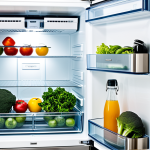Essential Pre-Closure Preparations for UK Home Pools
Preparing a home pool for closure in the UK requires a detailed pool closure checklist to ensure both the structure and water remain protected throughout the off-season. Start by inspecting the entire pool structure for any damage, such as cracks or leaks, and clean all visible surfaces thoroughly. This includes walls, floors, and any equipment like pumps and filters, which should be cleared of debris to prevent contamination.
Next, balancing water chemistry is vital. Adjust and stabilize pH, alkalinity, and chlorine levels according to recommended guidelines for prolonged closure. Properly balanced water minimizes the risk of algae growth and other water quality issues during the winter. In addition, removing non-essential items, including pool toys and loose accessories, helps prevent unnecessary contamination while safeguarding equipment.
Additional reading : Ultimate guide to choosing the best child safety pool alarms for uk homes
Following this UK pool maintenance routine can significantly extend the lifespan of your pool and reduce costly repairs when reopening. Consistently applying the home pool preparation steps ensures the water remains clear and the physical pool components stay intact despite the UK’s challenging weather conditions.
Securing Your Home Pool: Physical Security and Safety Compliance
Maintaining pool security UK standards is essential when closing a home pool. First, install safety covers designed to withstand weight and prevent accidental access. These covers should be robust and comply with UK pool legislation, ensuring that no child or pet can fall into the water during closure.
Have you seen this : The ultimate guide for uk homeowners: discover and repair pool leaks with expert tips
Next, fencing is a legal requirement for home pools in the UK to prevent unauthorized access. Approved pool fencing must be of an appropriate height, with self-closing and self-latching gates. This physical barrier reduces liability risks and enhances overall safety around your pool area.
To further reinforce security, consider installing pool alarms or CCTV systems. These devices notify homeowners of any unexpected entry or movement near the pool, adding an extra layer of protection. Alarm systems can detect water disturbances or gate openings, complementing your pool security UK measures seamlessly.
Compliance with UK pool legislation means regularly reviewing your barriers and covers for wear or damage. Prioritise replacing or repairing any compromised safety equipment during your pool closure checklist routine. Doing so ensures your home pool remains secure throughout the off-season, providing peace of mind alongside effective home pool preparation.
Managing Pool Water Quality and Preventing Algae Growth
Maintaining optimal water quality during closure is vital for preventing algae growth and preserving your pool’s condition. Following a precise pool closure checklist will help maintain clean water and guard against contamination throughout the dormant period.
Begin by applying a pool shock treatment to eliminate existing organic contaminants and bacteria. Shock treatments raise chlorine levels briefly to oxidize impurities, reducing the likelihood of algae developing once the pool is closed for months. After shocking, use long-lasting algicides specifically formulated for off-season use. These chemicals prevent algae cells from multiplying, a crucial step in successful UK pool maintenance during extended closures.
It is essential to monitor and adjust the pool’s chemical balance—maintaining proper pH, alkalinity, and chlorine residuals is fundamental to preserving clean water. Even during closure, water chemistry must remain stable to prevent cloudiness and algae outbreaks. Balancing these factors as part of your home pool preparation routine will save time and cost when reopening.
Regularly testing water chemistry, especially before final closure, and ensuring sanitizer levels remain effective are key measures. Properly managing pool chemicals throughout the closure period protects both the water and pool surfaces, supporting a smooth reopening season.
Weatherproofing Against the UK Climate
Preparing your pool to withstand the UK’s unpredictable weather is key in any effective pool closure checklist. Protecting against frost damage and heavy rain should be a priority in UK pool maintenance during off-season months.
Start by insulating or draining exposed pipes to prevent freezing that may cause bursts or leaks. Freezing temperatures are a common cause of costly repairs in home pools. Use foam covers or specialized pipe insulation to safeguard plumbing, or consider partially draining water lines if insulation isn’t sufficient.
Applying weatherproof pool UK treatments to surfaces can protect against rain erosion and temperature fluctuations. These products create a barrier that repels water and helps resist cracks from freeze-thaw cycles. Additionally, ensure your pool cover is designed for harsh conditions—robust enough to handle heavy rainfall and snow without sagging or tearing.
Simple measures like securing loose items or adding drainage channels to divert excess water help maintain the pool’s structural integrity. Consistently implementing these steps in your home pool preparation reduces damage risk, extending your pool’s lifespan through the winter and making reopening easier and more cost-effective. Weatherproofing is essential to confident, long-term UK pool maintenance in the face of changing seasons.
Essential Pre-Closure Preparations for UK Home Pools
Before closing your pool for the season, a thorough pool closure checklist is crucial to prevent damage and ensure smooth reopening. Begin by inspecting all pool surfaces, plumbing, and equipment for cracks or faults that could worsen during winter. Clean walls, floors, filters, and pumps meticulously to remove dirt, oils, and debris, as residual matter can cause stains or clog systems over time.
Balancing water chemistry is another vital component of UK pool maintenance. Adjust the pH, alkalinity, and chlorine levels to optimal ranges for long-term stability. Properly balanced water curtails bacterial growth and algae, reducing the need for extensive treatment when you reopen. Regular testing before closure helps verify these parameters.
Lastly, remove all non-essential items such as toys, floats, and loose accessories from the pool area. This step forms an essential part of home pool preparation by avoiding contamination and physical damage to both the equipment and pool surface during closure. Securing stored items away from moisture and frost protects their longevity for the next season’s use.
By following these core steps in your pool closure checklist, you maintain control over water quality and structural integrity, key to effective UK pool maintenance through the off-season.
Essential Pre-Closure Preparations for UK Home Pools
Thorough inspection is the backbone of any successful pool closure checklist. Begin by checking all pool surfaces, including walls, floors, and visible plumbing, for cracks or damage that could worsen during winter. Cleaning is equally essential—removing dirt, oils, and debris from the pool structure and equipment helps prevent contamination and surface staining throughout closure.
Balancing water chemistry is critical for effective UK pool maintenance during off-season months. Adjusting pH, alkalinity, and chlorine levels to optimal ranges stabilizes the water, discouraging algae and bacterial growth. A well-maintained chemical balance reduces the effort required at reopening and prolongs water clarity. Testing these parameters carefully before closure ensures long-term stability.
Eliminating non-essential items from the pool area is a key step in home pool preparation. Toys, floats, and loose accessories left in or near the pool introduce contaminants and raise the risk of physical damage to both equipment and surfaces during closure. Storing these items in dry, frost-safe locations preserves their condition and supports overall pool hygiene.
By completing these essential steps in your pool closure checklist, you secure both water quality and the structural integrity of your pool, laying the foundation for smooth and cost-effective maintenance throughout the season.










